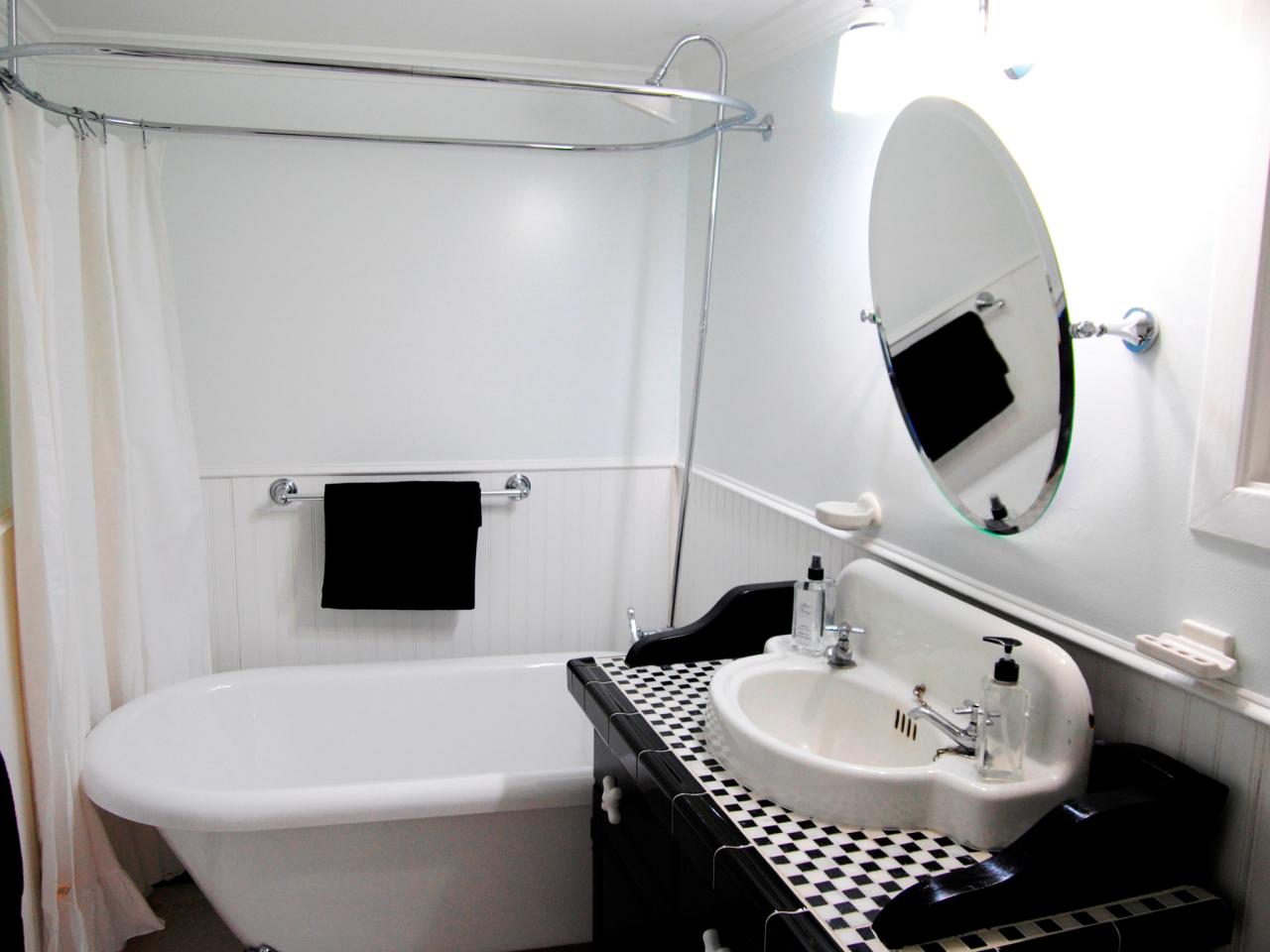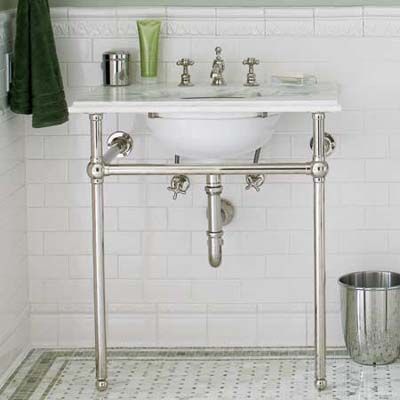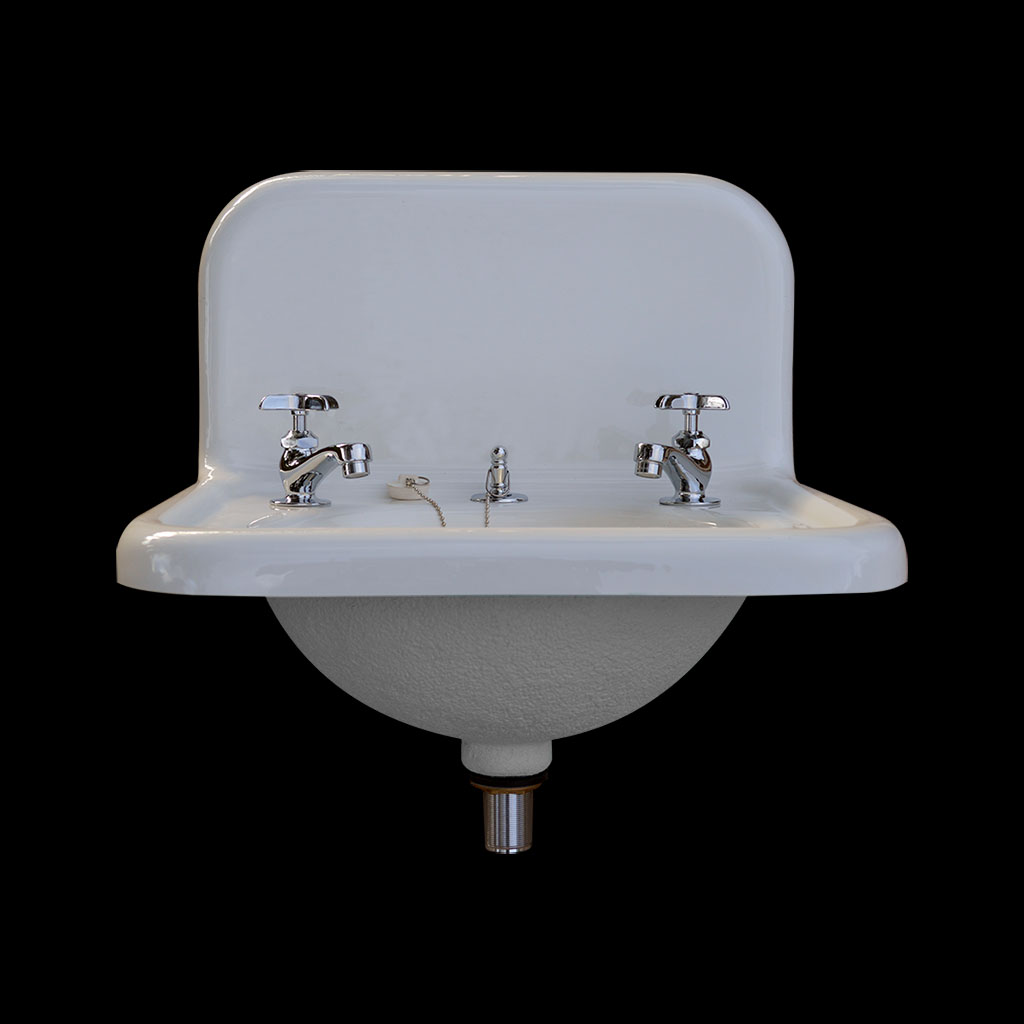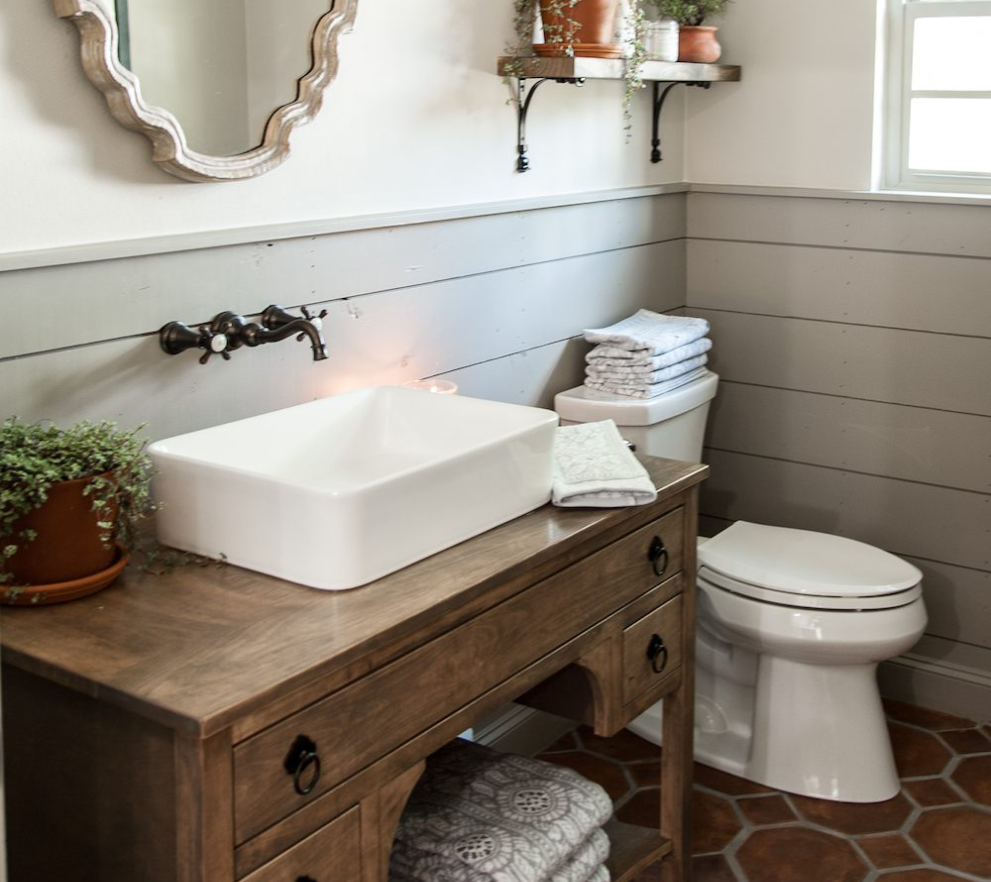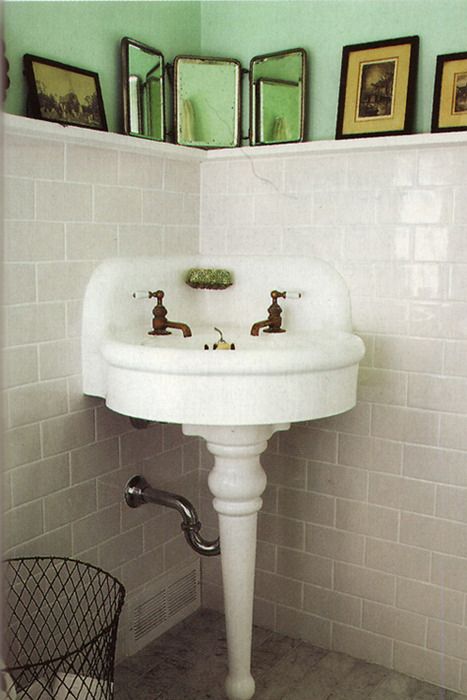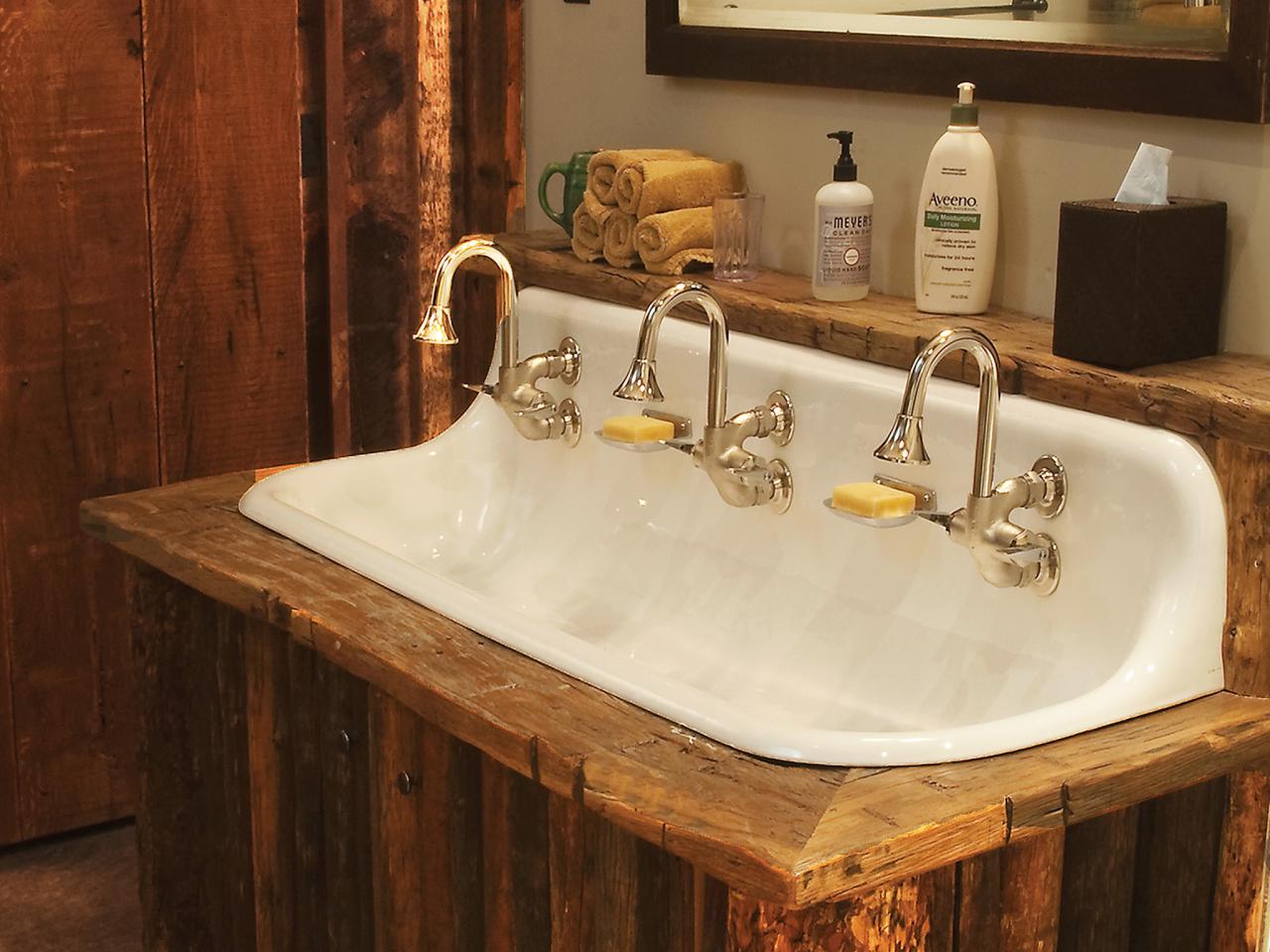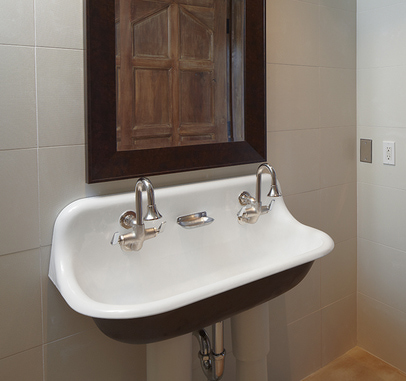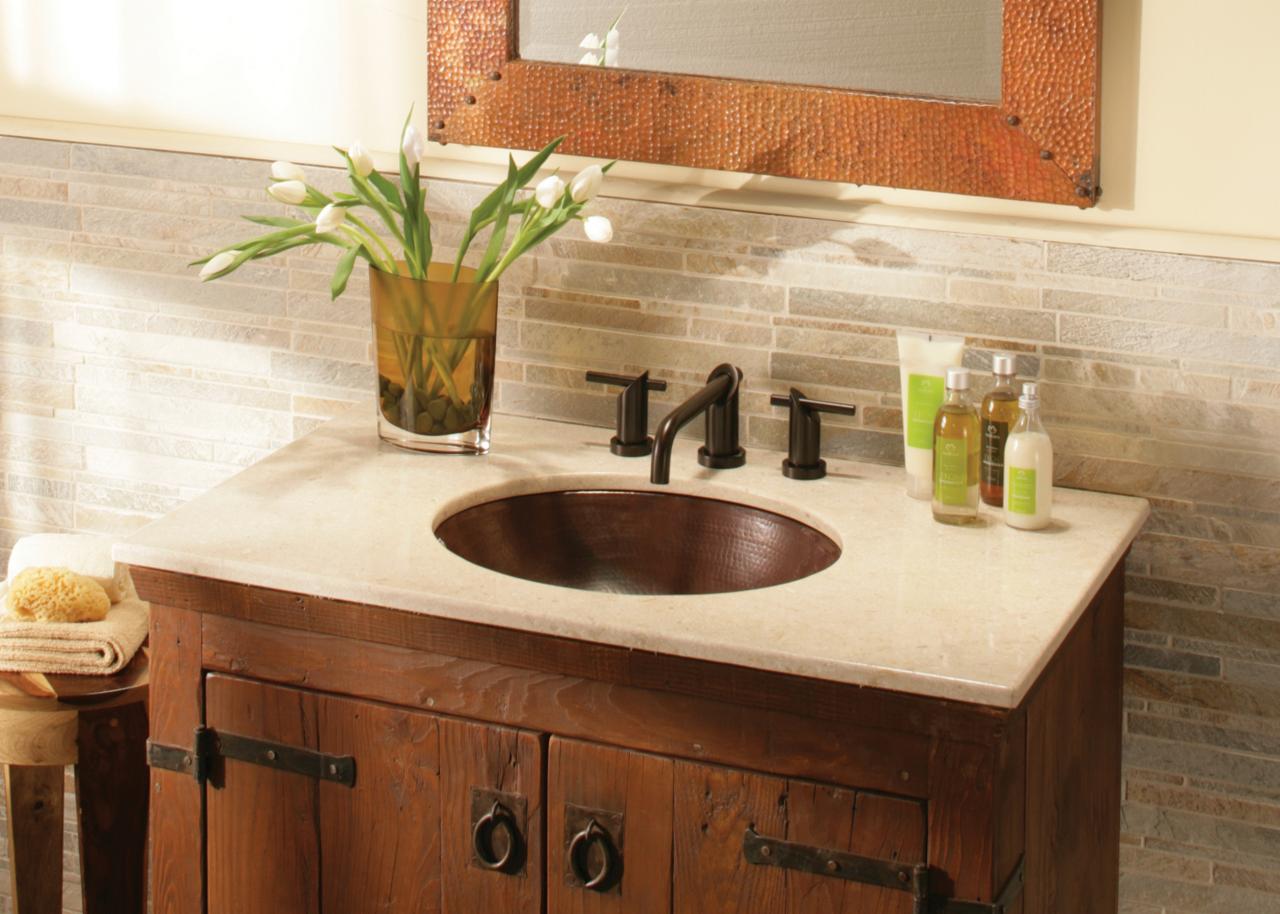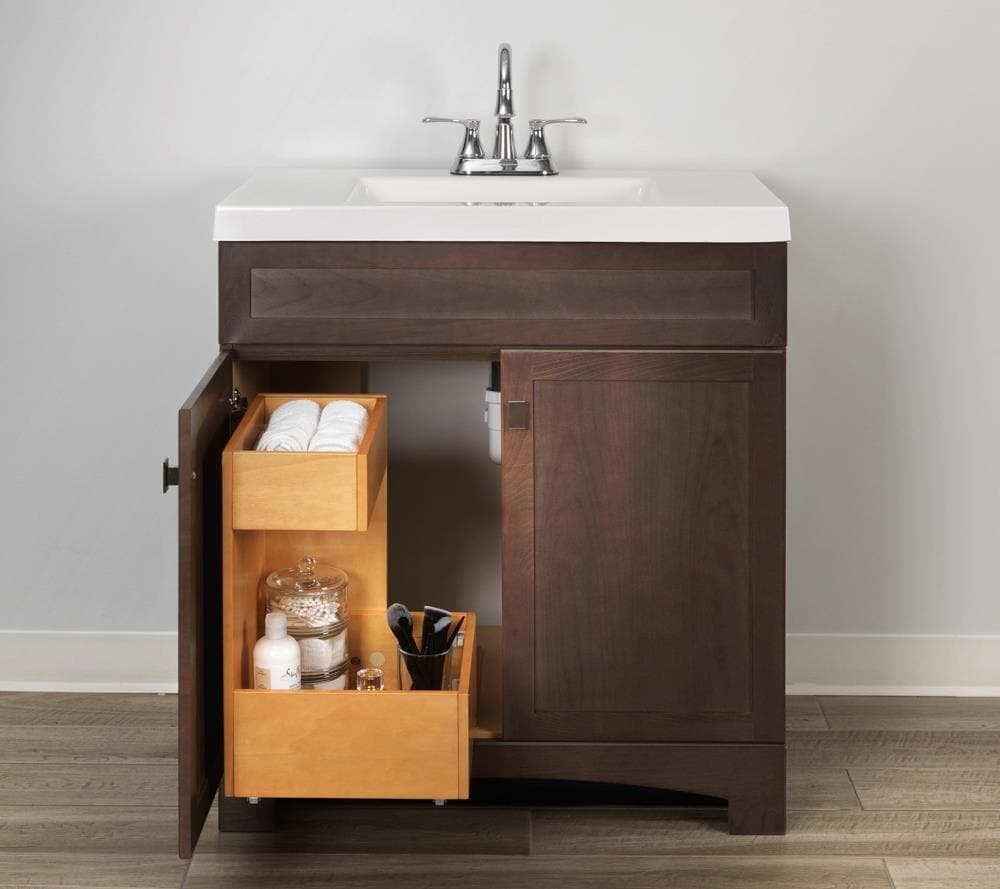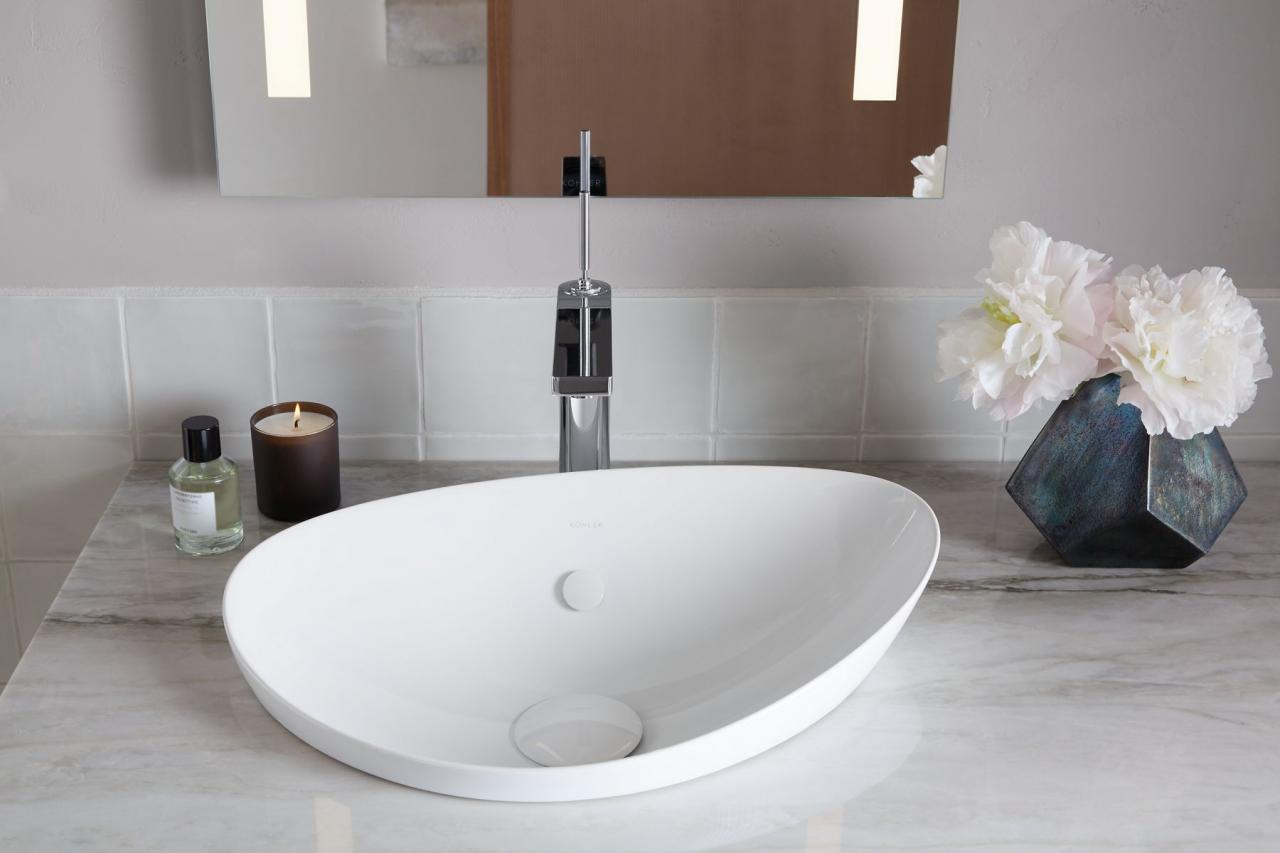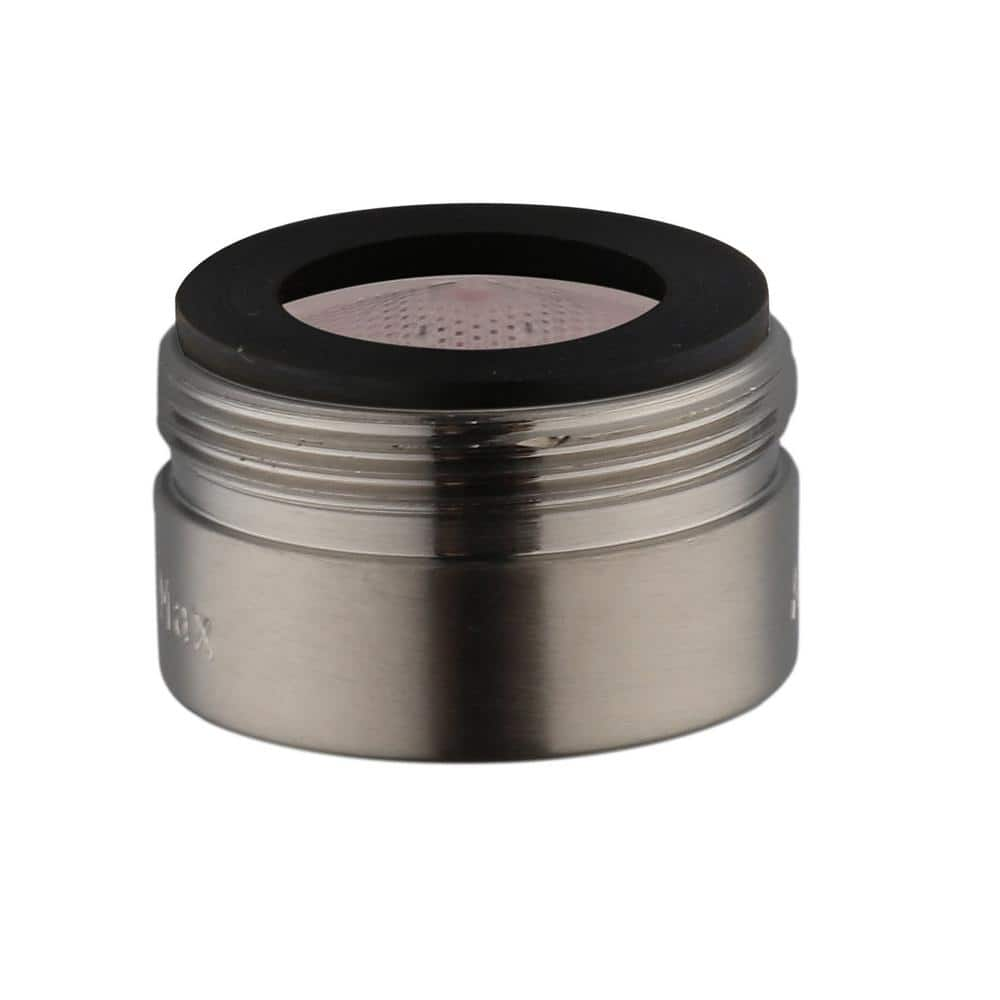Introducing Vintage Bathroom Sinks: Setting the Scene
Vintage bathroom sinks evoke a sense of nostalgia and timeless elegance, adding character and charm to any bathroom space. These pieces carry history within their design, often reflecting the craftsmanship and styles of past eras. Whether you’re renovating a historic home or simply appreciate the allure of vintage décor, exploring the world of vintage bathroom sinks is sure to inspire. Let’s discuss the enchanting world of vintage sinks and discover what makes them so special.
- A Glimpse into the Past: Vintage bathroom sinks offer a glimpse into the design trends of yesteryears. From the ornate Victorian styles of the 19th century to the sleek and streamlined looks of the mid-20th century, each era brings its unique aesthetic to the table. By incorporating a vintage sink into your bathroom, you can infuse your space with the charm and elegance of bygone days.
- Timeless Elegance: Unlike modern mass-produced sinks, vintage pieces often boast intricate details and high-quality craftsmanship. Whether it’s the delicate floral motifs of an Art Nouveau sink or the bold geometric patterns of an Art Deco piece, vintage sinks exude a sense of elegance and sophistication that never goes out of style.
- Versatility in Design: Vintage bathroom sinks come in a variety of styles, shapes, and materials, allowing you to find the perfect piece to complement your décor. From pedestal sinks with graceful curves to wall-mounted sinks with clean lines, there’s a vintage option to suit every taste and space. Additionally, vintage sinks can be found in materials ranging from porcelain and cast iron to copper and marble, adding further versatility to their design.
- Adding Character to Your Home: One of the joys of incorporating vintage pieces into your home is the character they bring to the space. A vintage bathroom sink not only serves as a functional fixture but also as a conversation piece and focal point of the room. Whether you opt for a fully restored piece or a gently worn sink with patina, its unique history and charm will infuse your bathroom with personality.
- Environmental Sustainability: Choosing vintage bathroom sinks is not only a stylish choice but also an environmentally conscious one. By repurposing and reusing existing pieces, you’re contributing to sustainable living practices and reducing the demand for new materials. Plus, vintage sinks are often built to last, meaning they can withstand the test of time and be enjoyed for years to come.
- A Labor of Love: Renovating and restoring a vintage bathroom sink can be a rewarding endeavor. Whether you’re refinishing a worn enamel surface, replacing missing hardware, or simply giving the sink a thorough cleaning, the process allows you to connect with the craftsmanship of the past and breathe new life into a piece of history.

Exploring Timeless Styles: Iconic Designs and Materials
Vintage bathroom sinks come in a myriad of styles and materials, each reflecting the design trends and craftsmanship of its era. From the ornate elegance of Victorian pedestal sinks to the sleek minimalism of mid-century wall-mounted models, there’s a vintage sink to suit every taste and aesthetic. Let’s see some of the most iconic designs and materials that have stood the test of time.
Victorian Elegance: The Victorian era, spanning from the mid-19th to the early 20th century, was known for its opulent and ornate design aesthetic. Victorian bathroom sinks often feature intricate floral motifs, scalloped edges, and elaborate pedestal bases. Made from materials such as porcelain and marble, these sinks exude timeless elegance and add a touch of old-world charm to any bathroom space.
Art Deco Glamour: The Art Deco movement of the 1920s and 1930s brought a sense of luxury and modernity to design. Art Deco bathroom sinks are characterized by geometric shapes, bold lines, and streamlined silhouettes. Materials like chrome, glass, and black marble were popular choices, lending a sense of glamour and sophistication to the space.
Mid-Century Modern Simplicity: In the post-war era of the 1950s and 1960s, mid-century modern design emerged with an emphasis on simplicity, functionality, and organic forms. Mid-century bathroom sinks feature clean lines, and minimalist shapes, and often incorporate materials such as ceramic, stainless steel, and teak wood. These sinks are prized for their sleek and timeless appeal, making them a popular choice for modern and retro-inspired bathrooms alike.
Retro Revival: With the resurgence of interest in vintage design, retro-inspired bathroom sinks have become increasingly popular in recent years. These sinks pay homage to the design trends of the past while incorporating modern conveniences and materials. From colorful pastel hues reminiscent of the 1950s to bold patterns and textures inspired by the 1970s, retro-style sinks add a playful and nostalgic touch to contemporary bathrooms.
Farmhouse Charm: Farmhouse-style sinks, also known as apron-front sinks, have a long history dating back to the 17th century. Originally designed for practical purposes on rural farms, these sinks have since become a beloved fixture in the country and cottage-style bathrooms. Characterized by their deep basin, exposed front, and durable materials such as fireclay or cast iron, farmhouse sinks exude rustic charm and timeless appeal.
Timeless Materials: In addition to design styles, the materials used in vintage bathroom sinks play a crucial role in their aesthetic and longevity. Porcelain, with its smooth surface and classic white finish, is a staple material for vintage sinks due to its durability and timeless appeal. Cast iron and enameled steel are also popular choices known for their strength and longevity. Other materials such as copper, brass, and marble add a touch of luxury and sophistication to vintage sink designs, making them sought-after options for discerning homeowners.
Tips for Finding Genuine Vintage Sinks
Finding authentic vintage bathroom sinks can be a rewarding treasure hunt, but it requires a bit of patience and know-how. With the growing popularity of vintage décor, there’s no shortage of options available, but distinguishing between genuine antique pieces and modern reproductions can be challenging. Here are some tips to help you source authentic vintage sinks for your bathroom renovation project.
Research and Education: Before diving into the world of vintage sinks, take some time to educate yourself about different styles, materials, and manufacturers from various eras. Familiarize yourself with the hallmark characteristics of each period, whether it’s the ornate details of Victorian design or the clean lines of mid-century modernism. Understanding the history and evolution of bathroom sink design will empower you to make informed decisions when shopping for vintage pieces.
Visit Antique Shops and Flea Markets: Antique shops, flea markets, and architectural salvage yards are excellent places to start your search for vintage bathroom sinks. These establishments often carry a wide selection of authentic antique pieces, ranging from pristine specimens to gently worn treasures with patina. Take your time browsing through the offerings, and don’t hesitate to ask the vendors about the history and provenance of the sinks that catch your eye.
Explore Online Marketplaces: In addition to brick-and-mortar stores, online marketplaces such as eBay, Etsy, and Chairish offer a vast array of vintage sinks for sale. These platforms allow you to browse through listings from sellers all over the world, giving you access to a diverse selection of styles and price points. When shopping online, be sure to carefully review the item descriptions and photos, and consider asking the seller any questions you may have about the sink’s condition and authenticity.
Attend Estate Sales and Auctions: Estate sales and auctions are treasure troves of vintage finds, including bathroom sinks. Keep an eye out for local estate sales in your area or search online auction websites for upcoming events. Estate sales offer the opportunity to explore a home’s contents and discover hidden gems, while auctions allow you to bid on coveted items and potentially score a great deal. Be prepared to act quickly and decisively if you come across a vintage sink that speaks to you.
Seek Out Reputable Dealers: When purchasing a vintage sink from a dealer or retailer, it’s important to do your due diligence and ensure that you’re dealing with a reputable source. Look for dealers who specialize in antique and vintage fixtures and have a proven track record of authenticity and customer satisfaction. Ask for references or read online reviews to gauge their reputation within the vintage community. A trustworthy dealer will be transparent about the origins and condition of their inventory and may offer guarantees or certificates of authenticity for certain pieces.
Consider Restoration and Refurbishment: If you’re unable to find the perfect vintage sink in its original condition, don’t despair. Many antique and salvage dealers offer restoration services to bring old sinks back to their former glory. Whether it’s refinishing the enamel surface, repairing chipped edges, or replacing missing hardware, skilled craftsmen can work wonders in restoring vintage sinks to their pristine condition. Keep an open mind and be willing to invest in the restoration process to transform a neglected relic into a beautiful focal point for your bathroom.
Restoring and Refurbishing: Bringing Old Sinks Back to Life
Restoring and refurbishing vintage bathroom sinks is a labor of love that allows you to breathe new life into old fixtures and preserve their timeless beauty for years to come. Whether you’ve uncovered a hidden gem at an antique shop or salvaged a neglected sink from a demolition site, the restoration process requires careful attention to detail and a willingness to roll up your sleeves. Here are some tips for bringing old sinks back to their former glory.
Assess the Condition: Before diving into the restoration process, carefully assess the condition of the vintage sink to determine the extent of the work needed. Look for signs of wear and damage, such as chipped enamel, rust spots, or missing hardware. Take note of any structural issues that may require professional repairs, such as cracks or leaks in the basin or pedestal.
Clean and De-Grease: Start by giving the sink a thorough cleaning to remove dirt, grime, and years of accumulated grease and soap scum. Use a gentle cleanser and warm water to scrub the surface of the sink, being careful not to scratch or damage the enamel or other finishes. For stubborn stains and buildup, you may need to use a mild abrasive cleaner or a solution of vinegar and baking soda to dissolve the residue.
Repair Chips and Cracks: If the sink has minor chips or cracks in the enamel surface, you can repair them using a porcelain repair kit. These kits typically contain epoxy or polyester resin filler that can be mixed to match the color of the sink and applied to the damaged areas. Follow the manufacturer’s instructions carefully and allow the filler to cure completely before sanding and buffing the repaired surface to blend seamlessly with the rest of the sink.
Replace Missing Hardware: Vintage sinks often have unique and ornate hardware, such as faucet handles, drain plugs, and towel bars, that may be missing or damaged. Search for replacement parts that match the original design of the sink, either through specialty retailers or online auctions and salvage yards. Be sure to measure carefully and double-check compatibility before purchasing replacement hardware to ensure a proper fit.
Refinish the Surface: If the enamel surface of the sink is dull, discolored, or showing signs of wear, consider refinishing it to restore its original luster and shine. There are several methods for refinishing a vintage sink, including DIY kits that allow you to apply a new coat of enamel or epoxy paint to the surface. Alternatively, you can hire a professional refinishing service to strip away the old finish and apply a fresh coat of enamel in the color of your choice.
Seal and Protect: Once the restoration process is complete, seal and protect the surface of the sink to prevent future damage and prolong its lifespan. Apply a clear sealant or wax designed for use on porcelain and enamel surfaces, following the manufacturer’s instructions for proper application and curing. Regular maintenance and care will help keep your restored vintage sink looking beautiful for years to come.
Incorporating Vintage Sinks in Modern Spaces
Blending the old with the new is a timeless design strategy that adds depth, character, and interest to any space. When it comes to incorporating vintage bathroom sinks into modern interiors, the key is to strike a balance between historical charm and contemporary style. Whether you’re renovating a historic home or simply love the look of vintage décor, here are some design inspirations and tips for seamlessly integrating vintage sinks into modern spaces.
Create a Focal Point: Make your vintage sink the focal point of the bathroom by positioning it prominently within the space. Choose a vanity or pedestal that showcases the sink and allows it to shine as a standalone feature. Consider installing statement lighting above the sink to draw attention to its beauty and create a sense of drama.
Mix and Match Styles: Don’t be afraid to mix and match different design styles to create a unique and eclectic look. Pair a vintage sink with modern fixtures and accessories for a fresh and unexpected twist. For example, combine a sleek wall-mounted sink with contemporary faucets and hardware for a striking contrast that highlights the sink’s vintage charm.
Play with Contrast: Embrace the juxtaposition of old and new by incorporating elements of contrast into your bathroom design. Pair a rustic farmhouse sink with sleek, minimalist cabinetry for a look that’s both cozy and contemporary. Experiment with contrasting colors, textures, and materials to create visual interest and depth in the space.
Add Vintage Accents: Enhance the vintage appeal of your bathroom by incorporating decorative accents and accessories that complement the style of the sink. Display antique mirrors, vintage artwork, and decorative objects on the walls to create a cohesive and curated look. Look for vintage-inspired textiles, such as embroidered towels or lace shower curtains, to add softness and warmth to the space.
Embrace Imperfection: Embrace the imperfections and patina of vintage sinks as part of their charm and character. Don’t be afraid to celebrate signs of wear and age, such as minor chips, scratches, and fading, as they tell the story of the sink’s history and add to its authenticity. Consider leaving some elements of the sink untouched or lightly restoring them to maintain a sense of authenticity and patina.
Focus on Functionality: While vintage sinks may be prized for their beauty and charm, it’s essential to ensure that they meet the functional requirements of modern living. Choose sinks with ample basin space and adequate drainage to accommodate daily use and hygiene needs. Consider installing modern amenities such as water-saving faucets, touchless sensors, and built-in storage solutions to enhance the functionality of the space without compromising its vintage appeal.
Care and Maintenance of Vintage Bathroom Sinks
Vintage bathroom sinks are not only beautiful and timeless but also require special care and maintenance to preserve their charm and longevity. Whether you’ve recently installed a vintage sink in your home or inherited one with your historic property, taking proactive steps to care for and maintain it will ensure that it remains a focal point of beauty and functionality for years to come. Here are some tips for caring for and maintaining vintage bathroom sinks.
- Regular Cleaning: Regular cleaning is essential to keep your vintage sink looking its best and prevent the buildup of dirt, grime, and stains. Use a mild, non-abrasive cleaner and warm water to wipe down the surface of the sink, including the basin, faucet, and hardware. Avoid harsh chemicals and abrasive scrubbers, as these can damage the enamel or other finishes on the sink.
- Preventative Maintenance: Take proactive measures to prevent damage to your vintage sink by avoiding behaviors that can cause scratches, chips, or cracks. Use a soft cloth or sponge to clean the sink, and avoid abrasive scrubbers or cleaners that can scratch the surface. Be mindful of heavy or sharp objects that could accidentally damage the sink if dropped or bumped against it.
- Addressing Minor Repairs Promptly: If you notice any minor chips, cracks, or other damage to the surface of the sink, address them promptly to prevent further deterioration. Use a porcelain repair kit to fill in small chips or cracks, following the manufacturer’s instructions carefully. For more extensive damage or structural issues, consult a professional plumber or restoration specialist for repairs.
- Avoiding Excessive Weight: Vintage sinks, especially pedestal and wall-mounted models, are not designed to support heavy weight or pressure. Avoid leaning or sitting on the edge of the sink, as this can cause stress fractures or damage to the basin and pedestal. Use caution when installing or removing hardware or accessories to prevent accidentally damaging the sink.
- Preventing Hard Water Stains: Hard water can leave unsightly stains and mineral deposits on the surface of your vintage sink, detracting from its beauty and luster. Prevent hard water stains by wiping down the sink after each use and using a mild acid-based cleaner or vinegar solution to remove mineral buildup periodically. Consider installing a water softener or filtration system to reduce the hardness of your water and minimize staining.
- Regular Inspections: Conduct regular inspections of your vintage sink to identify any signs of wear, damage, or deterioration. Check for leaks, cracks, or loose hardware that may indicate underlying issues with the sink’s integrity. Address any problems promptly to prevent further damage and ensure the continued functionality of the sink.
36 Inch Cast Iron High Back Farm Sink
Single Basin High Back Sink With Faucet u0026 Drain – Model #BS2018
Antique Bathroom Sinks
Vintage bathroom sinks – House Crazy Sarah
Antique Bathroom Faucets HGTV
Vintage Bathroom Sinks Vintage Tub u0026 Bath
How to Find Antique Bathroom Sinks EAGO Parts.Com (Recommended)
Vintage Bathroom Vanities
Related Posts:
